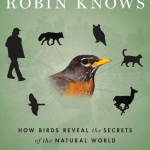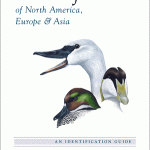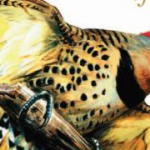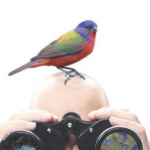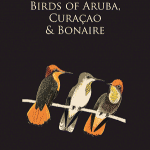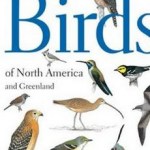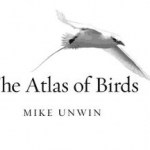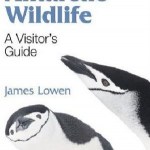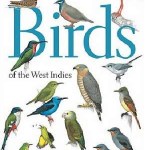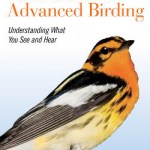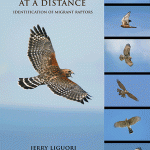birding
There was a dead rabbit in the middle of the road today. I suspected such a thing, nearby, just out of sight, and edible, because I noticed some crows taking off whenever a car went by. Then, when I went over, I could see the rabbit that they were feasting on between drive-bys.
I had been looking for rabbits lately, because of this: the cat had switched to hanging out by the upstairs window, the better to observe the just arriving Juncos (snow birds, it is fall). She had previously spent most of her time observing rabbits from the lower, ground level windows, until just the other day when…
The Birdman of Lauderdale is a collection of essays by birdman Clay Christensen.
Clay writes the popular "Birdman of Lauderdale" column for the Saint Paul Park Bugle, and leads birdwatching field trips in the Twin Cities area.
This is a collection of updated and edited essays from that publication, most about bird watching, or the birds themselves. Is it OK to hate cowbirds? What is it like to witness the takeoff of a mob of cranes? How do birdwatchers find birds anyway? What is bird banding all about? These and other burning questions are addressed in engagingly written snippets.
I…
There are three kinds of books that count as animal (usually bird) guides.
1) A pocket field guide of the critters of a reasonably circumscribed geographical area, like the Peterson Field Guide to Birds of Eastern and Central North America. This is a small book that can fit in a big pocket, and a classic guide like this one is something you'll want to have with you while bird watching in the eastern or central US.
2) A big book, not suitable for pockets, of the critters of a reasonably circumscribed geographical area. A great example of this is The Crossley ID Guide: Eastern Birds . It…
Golden Eagle
I hope I won't disappoint you ... this is not about John Ashcroft. It is about golden eagles (actually, maybe its about one golden eagle in particular).
A timely repost.
The golden eagle (Aquila chrysaetos) has been in decline for a very long time, so you may not know it formerly bred in a much wider range of habitats, across the entire U.S. Today it is known as a mountain eagle because this is where it is generally found, at least in North America. Any experienced birder will tell you that in places like Minnesota nine out of ten, or maybe 99 out of 100 golden eagle…
This is a summary of several of the better books I’ve had the opportunity to review here, organized in general categories. This is written from a North American perspective since most of my readers are North American (though many of you live to the west of the “Eastern Region” … but you probably know that). So, when not specified, a book with a regional focus is likely to be for that area, and the “Outside the US” section is labeled thusly.
Everybody needs a basic field guide. If you need more than one field guide because you are a family of birders, or because you like to keep one in the…
Are you interested in birding but don't really know much about it? Did you just put a feeder outside and noticed that birds are interesting, or did you finally get around to stopping at that wildlife refuge you drive by every week on the way to the casino and realize that walking down to the swamp to look at birds and stuff is both better exercise and cheaper than playing slot machines for nine hours straight? Or have you been birding in a casual way for a while, using your Uncle Ned's old binoculars and a tattered and torn Peterson you found on the sale table at the library, and want to…
There are several things you need to do to be a better birder. Some of these things can be handled by just tossing money after the problem. Better binoculars, more books, that sort of thing. If you use those tools well they will improve your abilities as a birder. But the most important thing you can do is probably to
consciously want to improve yourself and to go and learn stuff pertaining to that. And, to do that, knowledge is important bus so is approach, perhaps methodology is a good word.
There really are three or four aspects to being a better birder that could be viewed very…
If you are a birder and you are going on Spring Break (from the US), don't forget that there are birds where you are going. And, probably, there are bird books that cover your destination.
One of the really cool things about North American birding is that when you do go down to tye Yucatan, Caribbean, or Central America you'll see birds that are migratory and familiar, but in their other home (but just on their way back). They'll be surprised to see you!
I just got a copy of Birds of Aruba, Curaçao, and Bonaire, though I've got no personal travel plans for Aruba and environs at the moment…
What kind of birding binoculars do you use? How do you chose a good model?
Obviously, the best way to pick out a pair of binoculars is to try them out, but in doing so, I strongly urge you to try at least a couple of pairs that are beyond your budget, and work your way down from there. Not knowing what an excellent pair of binoculars is like makes it difficult to judge among the lesser forms that you will ultimately have to pick from. Putting it another way, if all you know is the $50 special, and you use a pair of them for a season or two, then the first time you bring a nice pair up to…
Face it. Half the time ... most of the time, really ... you use your Peterson (or some other favorite "field guide") as a checklist. You see a bird and you pretty much know in your head what it is, but you need to look it up to see what the three or four similar ducks or woodpeckers or whatever are in your area in order to be sure that it is a Common Merganser or a Red Headed Woodpecker or whatever. All you need is a basic picture (drawing preferred for this sort of thing) the names of the birds and basic range maps.
That is the role played by the Princeton Illustrated Checklists; These…
How are birds related to dinosaurs, crocodiles, and pterosaurs? Where do birds live, and not live? How many bird species are there, and how many actual birds, and how does this vary across the glob? What about endemics?; Where ate the most local species found? Mike Unwin's The Atlas of Birds: Diversity, Behavior, and Conservation covers this and more in a richly illustrated detailed global survey of Aves.
This new and very impressive, and highly accessible volume covers bird biogeography with an overview of counts and diversity followed by a continent-by-continent review, to give you an idea…
Here in the Northern Hemisphere, many of our birds fly away in the fall. Other, very cool birds from even farther north, depending on where you live then arrive. But just about now, where I live, we are at the tail end of the migration out and not quite at the migration in, so this is a good time to take stock of what is important: Which bird books do you want people to give you for Christmas?
Before I make any suggestions, I would like to point out that Princeton, an emerging and major player in the Bird Book world, has a facebook page that, if you "like," will automatically enter you in a…
People who watch birds identify them, and that process is integral to what makes birding interesting. But the best practices for identifying birds appear on the face of it to conflict with evolutionary concepts of birds, and this can lead to both sloppy thinking and missed opportunities
People who watch birds identify them, and that process is integral to what makes birding interesting. But the best practices for identifying birds appear on the face of it to conflict with evolutionary concepts of birds, and this can lead to both sloppy thinking and missed opportunities.
You need to know…
The first crane I ever saw is a bird burned permanently in my memory. It came out of nowhere and flew close by, staying in view lit by a nearly setting sun for about five wing beats. A gun was raised to shoot it but the trigger was not pulled.
I was a teenager, and the brother of a co-worker invited me to go hunting with him. The idea was not for me to actually hunt, but rather, for me to see what hunting was all about. It was a social gesture and a manly gesture. If I like hunting perhaps I would join one of their hunting groups, get a firearm, learn to shoot, and become one of the boys…
I've recently reviewed bird or nature books for some fairly exotic places (see this for all the reviews) including the Antarctic and the West Indies. Now, I have a book on the birds of one of the most exotic places ever: New Jersey!
OK, if you are from New York like I am, you know that was a joke. In all seriousness, New Jersey is an excellent place to go to see wildlife and I'm not talking about Atlantic City.
New Jersey has some of the largest swamps and marshes around, an extensive shoreline, and extensive pine barrens. Why, there are even mountains. The state, small and flattish…
I'm sitting here looking at Antarctic Wildlife: A Visitor's Guide. I've never been to the Antarctic so I can't tell you what I think of this book from the pragmatic angle of how well it works as a guide, but I can tell you that I've learned a number of things just looking at the book. For one thing, I had no idea that almost all tourist visits to Antarctica go to the same general area of the continent. I guess that makes sense given the geography of the region, but it had not occurred to me before.
I've guided a number of tours in Africa and some of my clients were very serious world…
The West Indies includes the Lucayan Archipelago (Bahamas and Turks and Caicos Islands); the Greater Antilles (Cuba, Hispaniola [Dominican Republic and Haiti], Jamaica, Cayman Islands); the Lesser Antilles (Leeward Islands [the Virgin Islands of Saint Croix, Saint Thomas, Saint John, Water Island, Tortola, Virgin Gorda, Anegada, Jost Van Dyke], Anguilla, Antigua and Barbuda, Antigua, Barbuda, Redonda, Saint Martin, Saba, Saint Eustatius, Saint Barthélemy, Saint Kitts and Nevis, Montserrat Guadeloupe); the Windward Islands (Dominica, Martinique, Saint Lucia, Saint Vincent and the Grenadines…
This post at 10,000 Birds, an item I accidentally bumped into on the Internet while looking for something else, and an unusual sighting moments ago, converge. And, its a nice distracting convergence which I need right now because as I sit here one week before fishing opener, looking at the glassy surface of Hunters Bay, I see fish jumping everywhere. Not only that, but a 54 inch muskie was found dead a few days ago 25 feet from where I'm sitting now. And, the Department of Natural Resources put up a fish weir just across the bay, and they've been coming by every morning and pulling out…
Description and identification of birds, or anything else, can be done in a rote manner with straightforward reference to details. If information about enough details is available, the identification will be accurate. But as humans we hardly ever do that sort of thing. If you ask someone to describe a car they saw recently, they will not refer to the angle of the back end or the overall dimensions or the specific layout of the headlights and tail lights. A person who does not know the make and model may say something like "It's a hatch back" or "It's an SUV" and in so doing provide…
Imma let you hear all about how Hawks at a Distance: Identification of Migrant Raptors is a remarkable and important field guide, but first I want to mention that one of the most interesting parts of that guide is the forward by Pete Dunne, who himself has written a bird book or two. Dunne reviews the history of bird identification guides, going back to the time before they actually included illustrations (yup, just words!) and follows the evolution of bird guides through the 20th century, with special reference to how raptors have been handled. Or, more exactly, mishandled.
It make sense…
